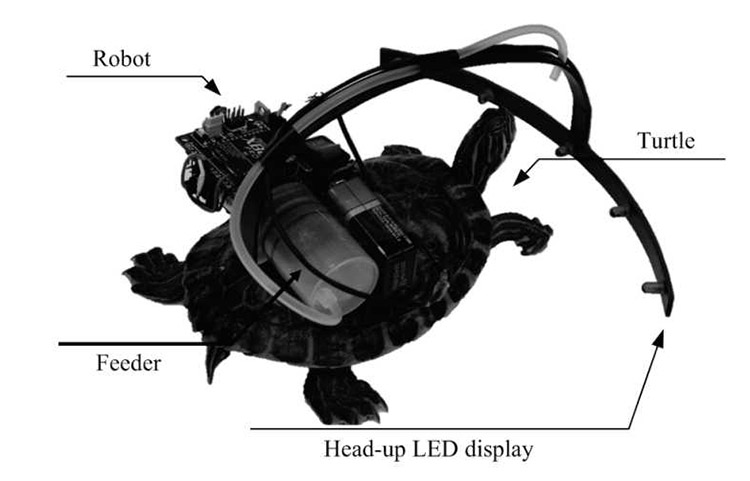Start running, the cyborg tortoises lie in waiting

Even though the horse is the noblest conquest of Man, according to this experience led by researchers from the Science and Technology Institute of the Republic of Korea (KAIST), robots start more modestly with tortoises.
A parasite robot device—riders will appreciate—is stuck to the shell, a bank of LED lamps dangles in front of the tortoise’s eyes and indicates the direction to take. If the tortoise complies correctly, the system drops a treat. So, the carrot without the stick. Experiences with animals are often awful but this robotized guiding system is without nail or screw.
But why this curious harness? According to the article scientifically published in April by the team led by the engineer Dae-Gun Kim, robots are rather overwhelmed facing evolution. Even by taking shortcuts with bio-mimetism, “movement remains a big problem”, especially with small robots. The tortoise, however, piano ma sano is cross-country. It also has a large back, enough to accommodate a host. The system works like a GPS for tortoises. And it also puts its blinker on. Well, the robot rather, because it’s the robot that guides the animal after some training. Tortoises are quite good pupils: five succeeded in walking the course.
Interrogated by New Scientist, the robotician Nathan Lepora from the university of Bristol imagines that these robots “could be used for surveillance, exploration and in places where it is difficult for humans and robots to go alone”. As long as we avoid mine fields and radiations…
The experience of KAIST, “New Scientist” video:
The scientific publication of the experiment
